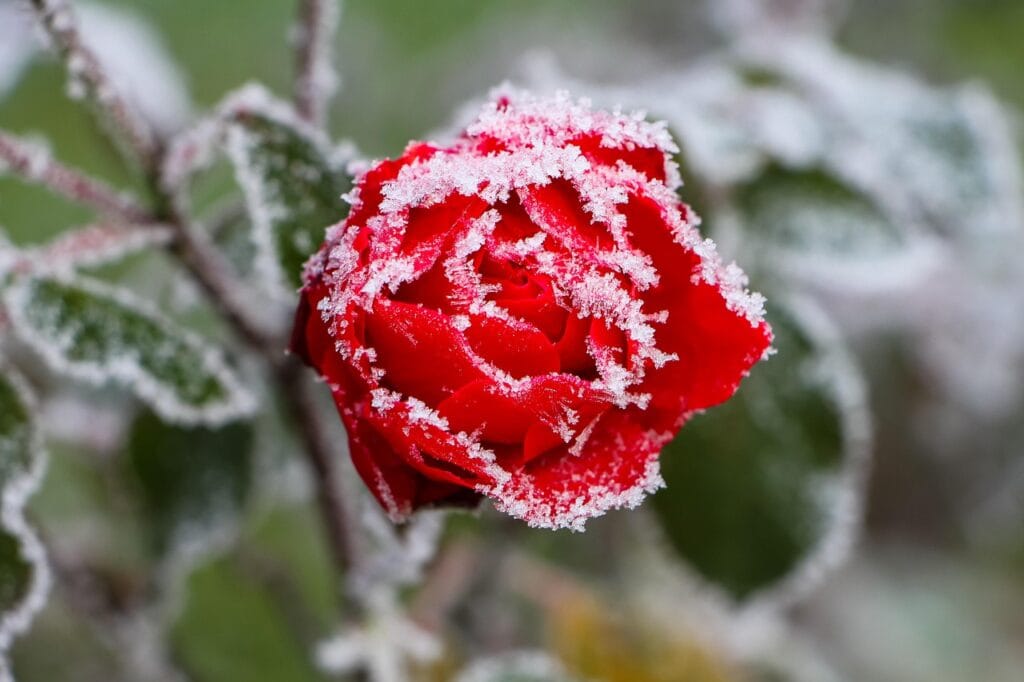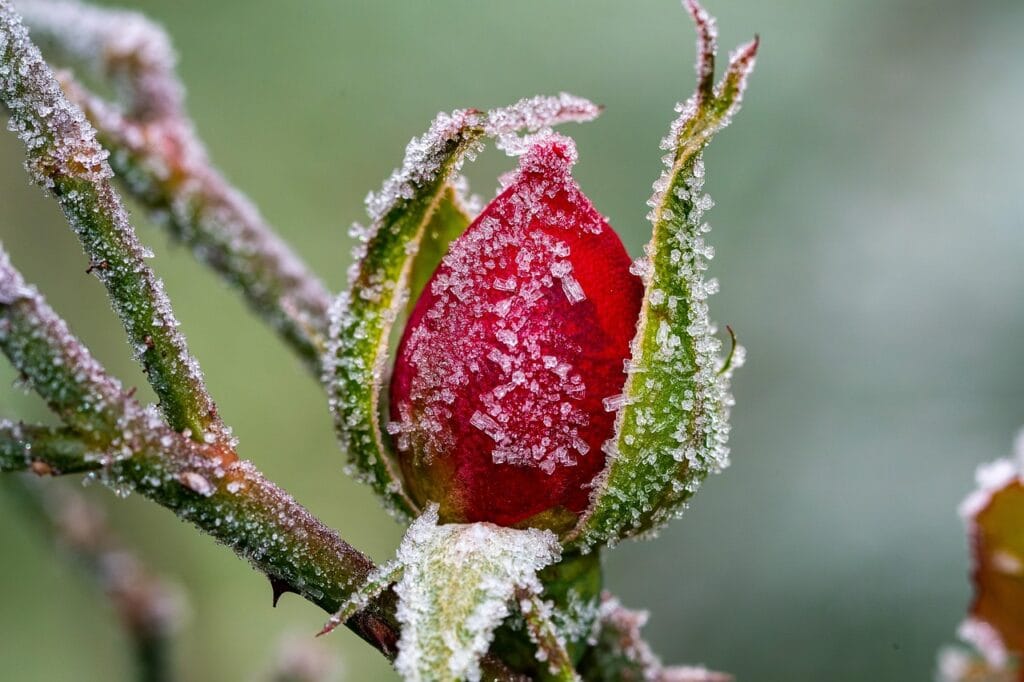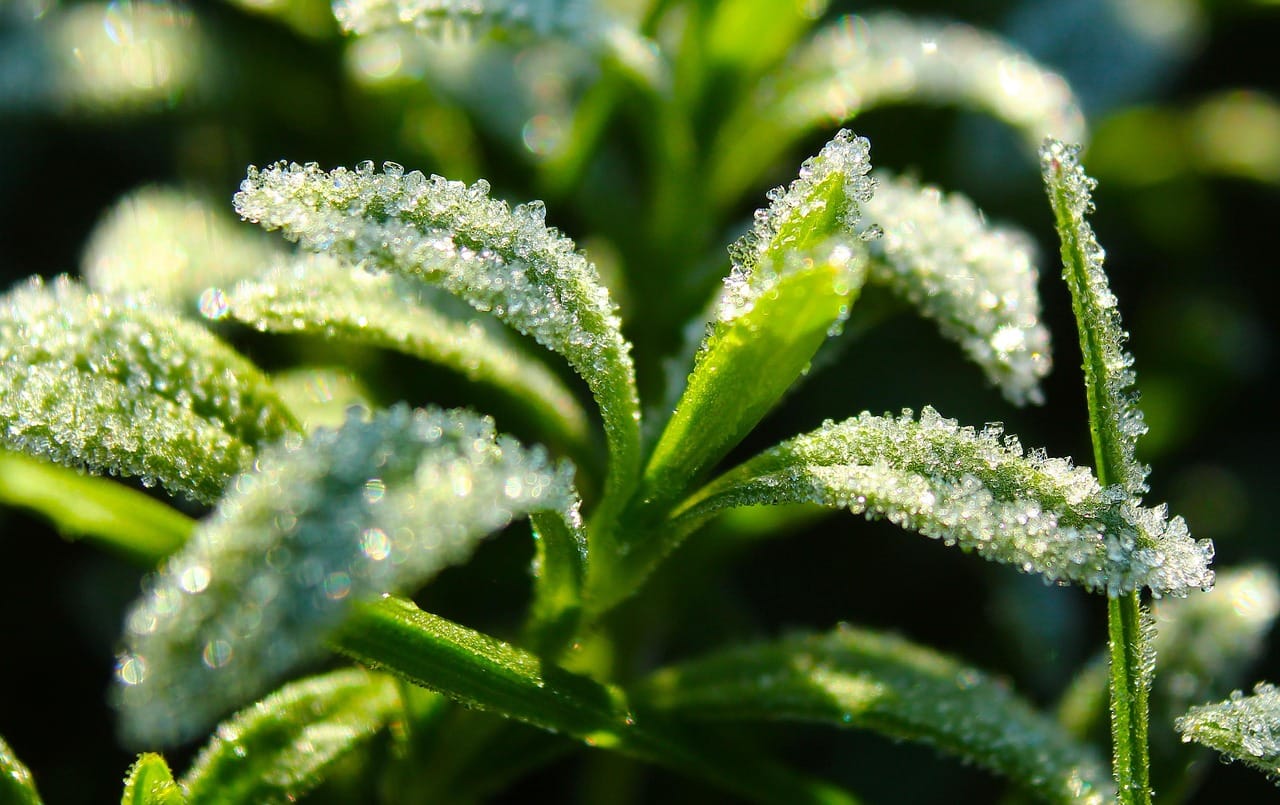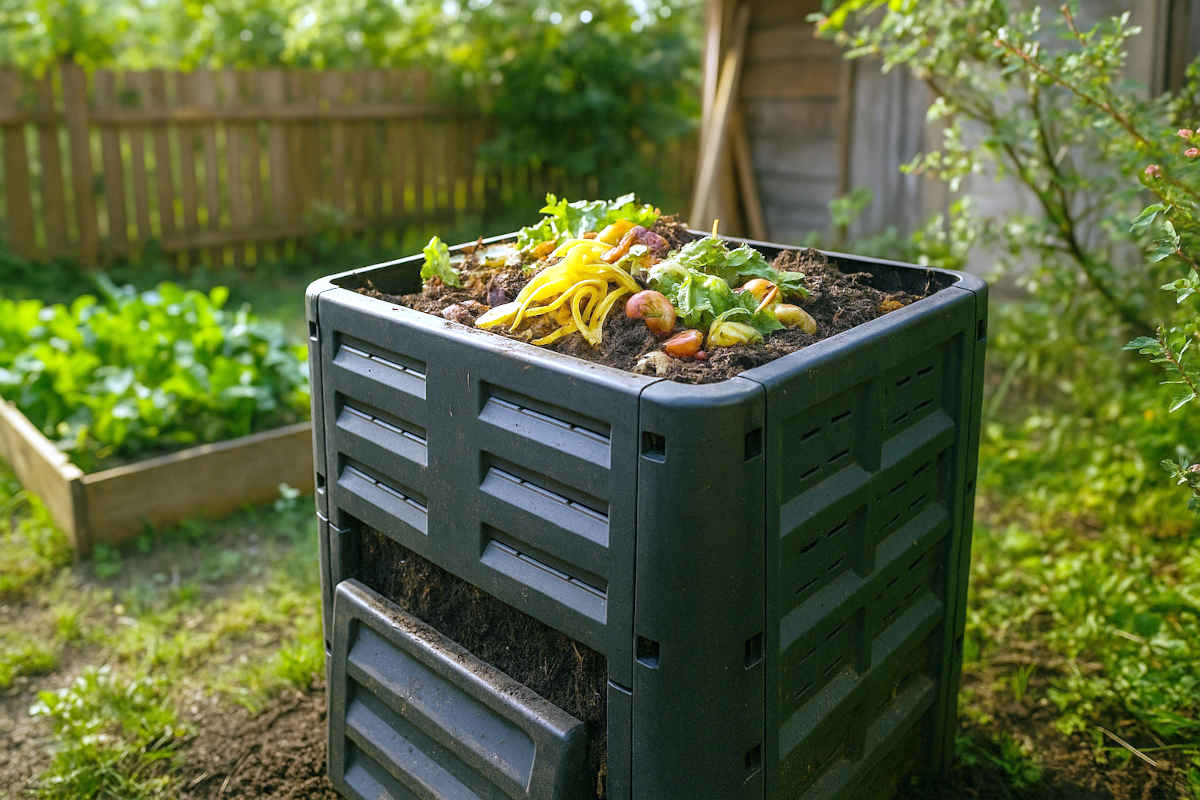You’ve spent weeks, maybe even months, caring for your garden. And then, one cold night, frost shows up like an uninvited guest and wrecks the whole party. If you’re wondering how to protect plants from frost without losing your mind or your marigolds, you’re in the right place.
Frost can sneak in overnight, especially in late fall or early spring, and seriously damage or kill unprotected plants. But don’t stress. This guide’s gonna walk you through everything you need to know to keep your garden safe when the temperatures start to drop.
We’ll look at what frost is, when you should start worrying about it, and how to shield your plants using stuff you probably already have at home. You’ll also learn what to do if frost does manage to bite your plants, plus long-term strategies to help prevent damage in the future. Oh, and we’ll throw in a few tricks for delicate or tropical plants (yep, even orchids).
By the time you’re done reading, you’ll know exactly how to outsmart frost and keep your garden looking great—even when it’s freezing outside.
Understanding Frost and Its Impact on Plants
Alright, let’s start with the basics. What is frost?
Frost happens when the temperature near the ground drops low enough for water vapor to freeze—usually around 32°F (0°C) or below.
You’ll often see it as that thin, icy layer on grass, cars, and unfortunately… your plants. And while it might look pretty, it’s bad news for your garden.
When frost hits a plant, the water inside its cells can freeze. That ice expands, damaging cell walls and stopping the plant from functioning properly.
You’ll see the signs the next morning: wilted leaves, blackened tips, or a mushy mess where your beautiful blooms used to be.
Now, not all plants react the same way. Some—like kale or pansies—can shrug off light frost like it’s no big deal. Others—like basil, tomatoes, and orchids—can get wiped out by a chilly night.
That’s why it helps to know which plants in your garden are frost-sensitive and which ones are a bit tougher.
Also, not all frost is created equal. There are two main types:
- Radiation frost (or clear sky frost) happens on calm, cloudless nights. The ground loses heat quickly and temps drop fast.
- Advection frost comes in with a cold front—windy, chilly air just sweeps through and brings freezing temps with it.
The more you understand frost, the better you can fight it off. And trust us, your plants will thank you.
You may also like:
- 7 Plants That Attract Dragonflies and Keep Mosquitoes Away
- Tomato Plant Leaves Turning Yellow? 7 Causes and Easy Fixes
- How to Grow Kale: A Step-by-Step Guide for Healthy, Homegrown Greens
When to Worry About Frost (and How to Predict It)
So, when should you actually start stressing about frost? The short answer: before it shows up.
First things first—know your first and last frost dates. These are average dates based on your USDA hardiness zone, and they’ll give you a general idea of when frost might hit.
If you’re in Zone 6, for example, your first fall frost could roll in around mid-October. Live in Zone 9? You might not see frost at all unless it’s a freak cold snap.
But averages are just that—averages. Weather isn’t always predictable, so it helps to watch the forecast closely, especially when nighttime temps dip below 40°F (about 4°C).
Pay attention to terms like “frost advisory” or “freeze warning” in your local weather report. Those are your signals to take action.
Here’s a quick tip: invest in a digital thermometer with a sensor you can leave outside. Put it near your plants, and you’ll get a real-time view of how cold it’s getting at ground level—which is what really matters to your garden.
Also, frost is more likely on calm, clear nights when there’s little wind and no cloud cover. Without clouds, all the heat from the day escapes, and that’s when the cold really settles in.
You can even use tools like frost calendars or apps that track local frost trends over time. The more you know your area’s patterns, the more you can prepare your garden like a pro.
You may also like:
- Hummingbird Carpet Plant: Everything You Need to Know to Grow It
- The Spider Plants Guide: Benefits, Planting, and Maintenance
6 Practical Ways to Protect Plants from Frost


Alright, let’s talk about what you can actually do when frost is in the forecast. The good news? You’ve got options—and many of them are easy, affordable, and use stuff you probably already have at home.
1. Mulch like a boss
Mulch isn’t just for summer weed control. In cold weather, it helps insulate the soil and protect plant roots. Just add a thick layer—around 2 to 4 inches—of straw, shredded leaves, pine needles, or bark. Think of it like a cozy blanket for your garden bed.
2. Cover up
You don’t need fancy equipment to protect your plants. Old sheets, burlap, cardboard boxes, or even upside-down buckets can do the trick.
Just make sure the cover doesn’t sit directly on the foliage—use stakes or garden hoops to create a little tent. And remember to remove covers in the morning once temps rise, or your plants might overheat.
Want something more permanent? Frost cloth or floating row covers are reusable and breathable, which means they let in light and moisture while keeping the cold out.
3. Try a cloche or cold frame
A cloche is just a fancy word for a mini greenhouse. You can use store-bought plastic domes or DIY it with a cut-up plastic bottle or milk jug.
For raised beds, a cold frame (basically a low box with a clear lid) is awesome for shielding plants and extending your growing season.
4. Water wisely
Yep—watering your plants before a frost can actually help. Moist soil holds heat better than dry soil, so it can raise nighttime temps near your plants by a few degrees. Just don’t overdo it—you want moist, not soggy.
5. Bring pots inside
If you’ve got container plants, especially tropical or tender ones, move them indoors or into a garage, porch, or shed overnight. Don’t forget about them in the morning—give them some sun once the weather warms up.
6. Add a little heat
Got outdoor lights? Use old-school incandescent Christmas lights (not LEDs) to gently warm the air around your plants. Drape them under a cover, and you’ll create a mini microclimate that stays just warm enough to prevent frost.
You may also like:
Long-Term Strategies to Prevent Frost Damage
Quick fixes are great in a pinch—but if frost is a regular part of your gardening season, it pays to think ahead. Here are some smart, long-term moves that’ll make your garden more frost-resistant over time.
1. Use your microclimates
Every yard has warmer and colder spots. Areas near a wall, fence, or patio often hold heat longer, thanks to reflected sunlight or protection from wind. That’s where you want to plant your more sensitive stuff. Got a south-facing wall? That’s garden gold in the winter.
2. Choose cold-tolerant plants
Not all plants are delicate. If frost is common in your area, go for varieties that can handle it. Think cabbage, kale, pansies, lavender, and ornamental grasses. For flowers and veggies that hate the cold, look for frost-tolerant cultivars or hybrids.
3. Adjust your planting schedule
Sometimes timing is everything. Start frost-sensitive seeds later in the spring, or plan to harvest them before the first fall chill. You can even stagger plantings so you don’t lose everything to a surprise cold snap.
4. Install a greenhouse or hoop house
If you’re really into gardening (or just love babying your plants), a greenhouse is a game changer. Even a small one lets you control the temperature, light, and humidity.
Can’t go all-in? A hoop house—basically a plastic tunnel over garden beds—can add weeks to your growing season and protect from frost without a huge investment.
Over time, these strategies will help your garden bounce back faster—or even skip frost damage altogether. It’s all about working with your environment, not fighting it.
You may also like:
Special Tips for Protecting Young and Delicate Plants
Young plants are like babies—they’re fragile and need extra care. And delicate plants? Same deal. Frost can knock them out fast if you’re not ready.
Seedlings and transplants need backup
If you’ve just moved a plant from indoors to the garden—or started a new batch of seedlings—they’re not used to the cold yet.
You can harden them off (gradually expose them to outdoor temps over a week), but if frost shows up during that process, cover them up with a lightweight fabric or cloche overnight. Even a milk jug cut in half works in a pinch.
Tropical and exotic plants = high maintenance
Plants like orchids, bird of paradise, or hibiscus don’t mess around when it comes to cold. Anything below 50°F (10°C) can stress them out—and frost can straight-up kill them.
If they’re in pots, bring them inside as soon as the forecast dips. If they’re in the ground, you’ll need to get creative: add a thick layer of mulch around the base, build a tent with frost cloth, or even wrap the whole plant in breathable fabric.
Double up on protection
Sometimes one layer of protection isn’t enough. For extra cold nights, stack your defenses: mulch the base, wrap the plant, and add a row cover. For orchids especially, wrapping the pot and using a mini cloche can make the difference between survival and a soggy, frozen mess.
Don’t assume they’ll bounce back
With delicate plants, one frost event can do permanent damage. Don’t take chances—if you know a plant doesn’t like cold, take it seriously and prep early. It’s way easier than trying to bring a half-frozen orchid back to life.
You may also like:
What to Do After Frost Has Hit Your Garden


Okay—let’s say frost showed up and did some damage. Don’t panic. Your garden might look rough, but not everything is lost. Here’s how to deal with the aftermath like a pro.
1. Don’t rush to prune
It’s tempting to grab your clippers and start hacking away at the blackened bits. But hold up. Damaged leaves and stems can actually help protect the healthy parts underneath. Wait a few days to see how the plant responds—some will bounce back once the weather warms up.
Once you’re sure there’s no more frost coming and the plant’s not perking up, then you can prune off the dead material. Use clean, sharp tools, and cut just above where new growth is starting (if any).
2. Check for survivors
Look closely. Some plants might look totally fried on the outside but still have green stems or healthy roots. Scratch the bark or stem with your fingernail—if it’s green underneath, there’s hope. Water them gently and give them time to recover.
3. Ease off the fertilizer
Don’t try to “fix” frost damage with a blast of fertilizer. It can stress the plant even more. Give it a little time, keep it watered, and wait until new growth shows up before you feed it.
4. Know when to say goodbye
If a plant is mushy all the way to the base or smells bad, it’s probably done. Pull it, compost what you can (unless it’s diseased), and plan ahead next time with a more frost-tolerant option—or better protection.
Frost damage isn’t always the end. With a little patience and the right moves, your garden can bounce back surprisingly well.
You may also like:
Conclusion
So, how do you protect plants from frost? You stay ahead of it.
Know your frost dates. Keep an eye on the weather. Use mulch, covers, and smart placement to create a frost-resistant garden. And when that cold snap rolls in, be ready to take action fast, especially with delicate or young plants.
Frost doesn’t have to spell disaster. With the right tools and a little planning, you can keep your garden thriving, even when the temperature dips below freezing.
Want to keep your garden blooming year-round? If you’ve got orchids, or you’re thinking of growing them, you’ll definitely want to check out our complete guide on how to make orchids bloom.
FAQ – How to Protect Plants from Frost
1. What temperature is too cold for most plants?
Once the temperature drops below 32°F (0°C), most tender plants are at risk of frost damage. Some cold-sensitive types need protection even at 36–38°F.
2. What can I use to cover plants during a frost?
Use breathable materials like sheets, blankets, burlap, or frost cloth. Avoid plastic unless it’s elevated and doesn’t touch the plant.
3. Does watering plants before a frost help?
Yes! Moist soil retains heat better than dry soil, which can slightly raise the temperature around your plants overnight.
4. Should I leave covers on plants during the day?
No. Remove covers in the morning once temperatures rise to prevent overheating and allow sunlight to reach your plants.
5. How do I know if my plant is frost-damaged?
Look for blackened, wilted, or mushy leaves and stems. Scratch the stem—if it’s brown inside, that part is likely dead; if it’s green, there’s still life.
6. Can a plant recover from frost damage?
Sometimes, yes. Give it a few days to bounce back, avoid fertilizing too soon, and prune only once you’re sure which parts are truly dead.




